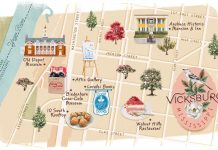 I often travel to places I’ve read about, and I like how the remembered story unfolds as I drive, at once moving toward a destination and returning to a memory. On this particular trip, I’m remembering Ernest J. Gaines’s The Autobiography of Miss Jane Pittman, a novel that follows the 100-year life of Miss Jane, from her birth during slavery to her death in the 1960s.
I often travel to places I’ve read about, and I like how the remembered story unfolds as I drive, at once moving toward a destination and returning to a memory. On this particular trip, I’m remembering Ernest J. Gaines’s The Autobiography of Miss Jane Pittman, a novel that follows the 100-year life of Miss Jane, from her birth during slavery to her death in the 1960s.
I’m heading to Pointe Coupee, Louisiana, and when I arrive, I’ll meet Ernest himself. I’m accepting an award named in his honor, and to say I’m grateful doesn’t come close to describing how I feel. Ernest has been a hero of mine since I was a teenager. In 2002, I sat in an auditorium at Spelman College in Atlanta and listened as he discussed his life and writing with Emory professor Rudolph Byrd. I’ll see Rudolph on this trip too. Together, we’ll all drive around Pointe Coupee, stopping to see a tree that is both myth and landmark.
It’s a 400-year-old oak, and in Ernest’s novel, it’s Miss Jane’s place of rest and commune. When we arrive, the tree looks as I imagined it would. The wide spread of the branches and the rise of the crown. The drape of the Spanish moss. A trunk some twenty-seven feet around. It’s January, with the winter-colored marshes and empty cane fields. With so much dormant and fallow, the evergreen hue of the oak gives the tree a feeling of permanence, still growing after all this time.
But what most people don’t know is this: The life of the tree almost ended. A few years ago, one of its branches fell on the road and a car crashed into it. Some wanted the oak cut down. But because it had a name and a history, the tree was saved. Thanks to an acclaimed writer and his conjuring of Miss Jane Pittman—one rendition of the black Southern experience—the tree was too well known to be erased without resistance. Ernest’s old church also remains, restored and moved to his backyard. He even headed an effort to restore a nearby cemetery, saving it from the fate of so many gravesites, plowed under and turned into farmland.
The preservation efforts of Ernest and his wife, Dianne, have created in this parish landscape what The Autobiography of Miss Jane Pittman created on the page: a space of memory and feeling. Bringing Miss Jane to life was in many ways an act of historical preservation like the efforts to save the church, the cemetery, and the oak. Standing beneath the tree, I have joined its audience—the imagined folk, the reimagined, and the living whose future journeys will follow mine.
Ravi Howard is the author of two novels. His first, Like Trees, Walking, was honored with the Ernest J. Gaines Award for Literary Excellence. His most recent offering, Driving the King, is a fictionalized account of Nat King Cole’s childhood in Alabama as told by his friend and chauffeur. Howard has recorded commentary for NPR’s All Things Considered, and his work has appeared in the New York Times and Salon. He is an assistant professor of creative writing at Florida State University.














